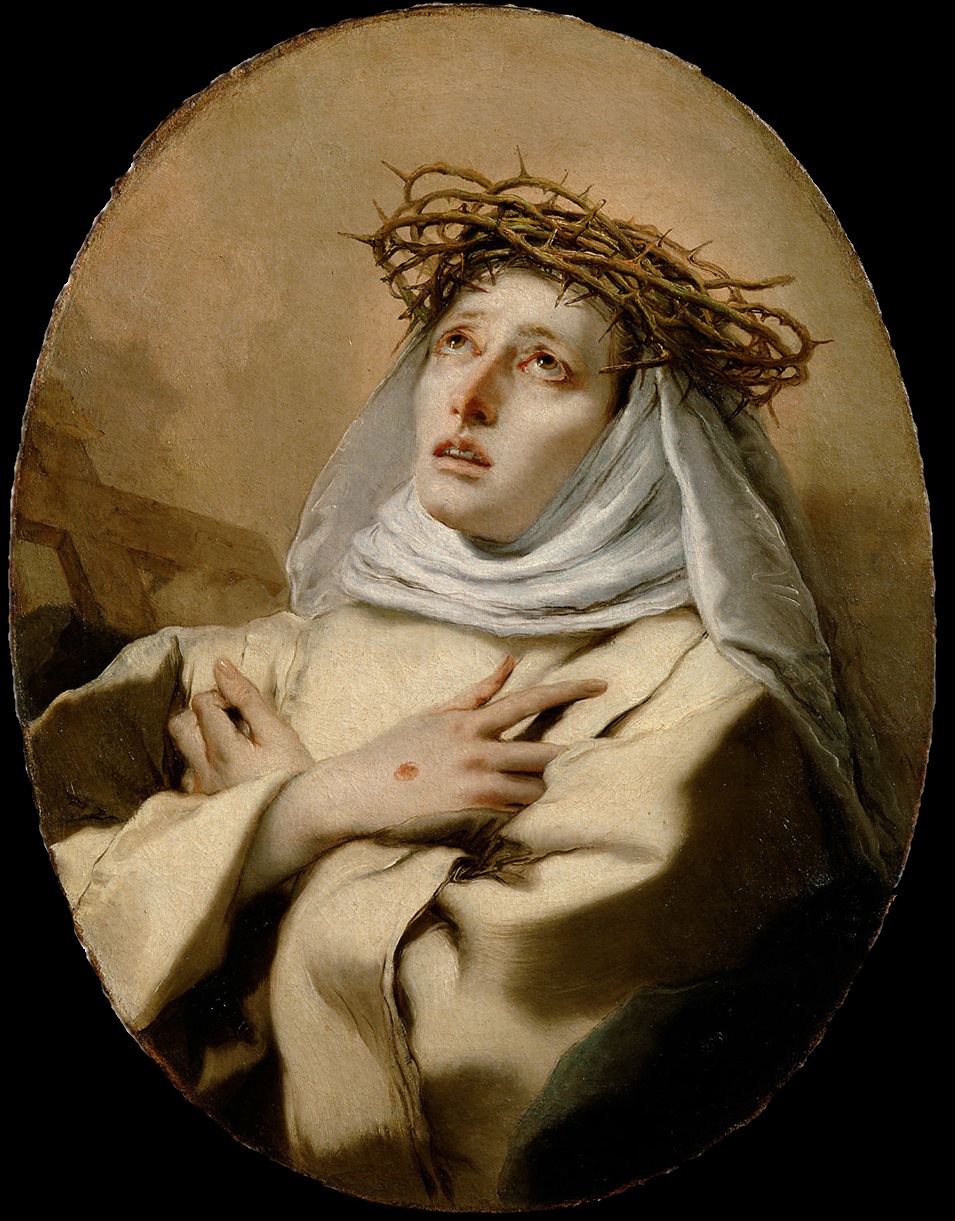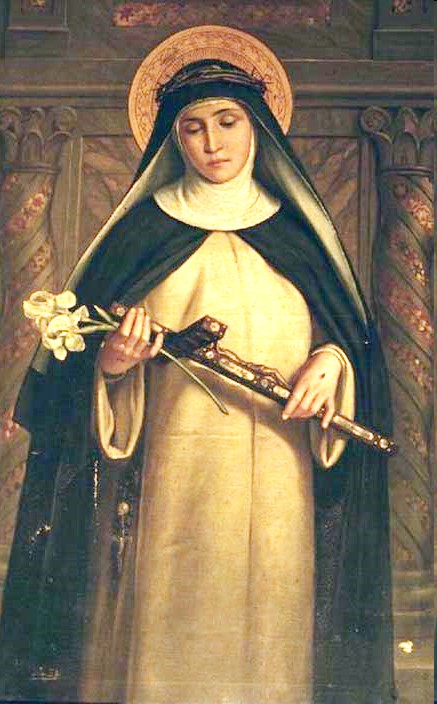
Catholic Saints
Saint Catherine of Siena, born in 1347 in the vibrant city of Siena, Italy, emerged as a remarkable 14th-century Dominican tertiary, mystic, and Doctor of the Church, whose fervent devotion and tireless efforts in spirituality and peacemaking left an enduring legacy in the Catholic tradition. Renowned for her profound spiritual writings, such as The Dialogue of Divine Providence, and her bold interventions to reconcile warring factions, including urging Pope Gregory XI to return to Rome from Avignon, she died in 1380 at the age of 33, exhausted by her labors for the Church. Her feast day is celebrated on April 29, a tribute to her sanctity. Catherine’s influence profoundly shaped future saints, notably Saint Teresa of Ávila, who drew inspiration from her mysticism. Saint Dominic, founder of her order, was echoed in her zeal, with a biographer noting, “She carried Dominic’s spirit into a new age.”
Her feast day is celebrated on April 29.
Doctor of the Church
Born in 1347 in Siena, Catherine became a powerful mystic and advocate for Church reform.
Catherine Benincasa was born on March 25, 1347, the 23rd or 24th child (accounts vary) of a large family in Siena, Italy, during a time of plague and political unrest. Her father, Giacomo, was a wool dyer, and her mother, Lapa, managed their bustling household. From a young age, Catherine exhibited an extraordinary piety, reportedly experiencing her first vision of Christ at age six. She resisted her family’s attempts to arrange a marriage, instead dedicating herself to a life of prayer and penance. At around 16, she joined the Dominican Third Order, becoming a tertiary—living a religious life while remaining in the world rather than entering a convent.
Catherine’s early years were marked by intense asceticism. She lived as a recluse in her family home, fasting rigorously and spending hours in prayer. She claimed to receive mystical experiences, including visions of Christ, the Virgin Mary, and various saints, which shaped her spiritual mission. Her resolve strengthened despite opposition from her family, who initially misunderstood her vocation. By her late teens, she emerged from this period of solitude, compelled by a divine call to serve others actively.
Catherine’s public life began in her twenties when she started ministering to the poor, sick, and imprisoned in Siena. Her reputation for holiness grew, attracting a group of followers known as the “Caterinati,” which included priests, nobles, and laypeople. She became known for her mystical experiences, including the “mystical marriage” to Christ around 1367, where she received a spiritual ring visible only to her.
Her influence extended beyond Siena as she wrote letters to popes, kings, and civic leaders, urging peace and Church reform. During the Western Schism, she traveled to Avignon in 1376 to persuade Pope Gregory XI to return the papacy to Rome, which he did in 1377—a monumental achievement attributed largely to her persistence. Her writings, including over 380 letters and her book The Dialogue, reflect her deep theological insight and fearless critique of corruption within the Church.
Catherine’s peacemaking efforts also included mediating conflicts between Italian city-states, such as Florence and the Papal States. Despite her lack of formal education—she learned to read and write late in life—her eloquence and conviction made her a formidable figure in a male-dominated era.
Catherine’s health declined due to her extreme fasting and tireless work. She suffered a stroke in 1380 and died on April 29 at age 33 in Rome. She was canonized in 1461 by Pope Pius II, a fellow Sienese. In 1970, Pope Paul VI declared her a Doctor of the Church, recognizing her theological contributions, making her one of the first women to receive this honor alongside St. Teresa of Ávila.
Known as the patron saint of Italy (with St. Francis of Assisi), nurses, and those who suffer from illness, Catherine’s legacy endures through her writings and her example of courage. Her relics, including her head preserved in Siena’s Basilica of San Domenico, remain a focal point of devotion. Her life continues to inspire those seeking spiritual depth and social justice.
Born in Siena.
Born during the Black Death in Siena.
Experienced a vision of Christ.
Began her spiritual journey at age six.
Joined Dominican Tertiaries.
Became a Dominican tertiary.
Received a spiritual ring from Christ.
Deepened her mystical experiences.
Traveled to Avignon.
Convinced Pope Gregory XI to return to Rome.
Authored her major spiritual work.
Documented her mystical theology.
Died in Rome.
Passed away and later canonized in 1461.

“Be who God meant you to be and you will set the world on fire.”
Saint Catherine of Siena Quotes
“All the way to heaven is heaven, because Jesus said, ‘I am the way.’”
“Nothing great is ever achieved without much enduring.”
“The soul cannot live without love. It always wants to love something, for love is the stuff it is made of.”
“Proclaim the truth and do not be silent through fear.”
“If you are what you should be, you will set the whole world ablaze!”
“To the servant of God, every place is the right place, and every time is the right time.”